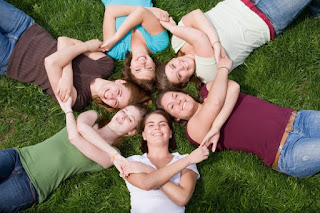Dr Sheldon Cohen is a professor of psychology at Carnegie-Mellon. His specialization is studying the link between social ties and health. When the pandemic and the lockdown began, he looked at his phone. Out of the 800 contacts, he made a shortlist of 50, and ranked them according to how often he would like to interact with whom. The ranking was based on how meaningful the person was to him.
Not everyone is as systematic as Dr Cohen, but social
circles are shrinking for all of us, says writer Kate Murphy in the NYT.
*****
Friend is a loosely used term, particularly since the birth
of social media. There are people who don’t recognize their own friends from
the Facebook list. Some people collect friends like my generation collected
postal stamps in childhood, for eg0 satisfaction and show-off.
Certainly, in the before-mask era, we interacted with hundreds
of people. Ten years ago, I went to a gym every morning, learnt ballroom
dancing in the evenings, attended a writer’s club and a readers’ club every
month, and socialized every Sunday with my fellow marathon runners. My life was
exhausting and full of people. Now, ten years later, I am in touch with very
few of those hundreds of “friends”. Most of them were activity friends – the activity
over, the friendship was over.
Similarly, last few years, whenever my daughter’s
school summoned us, I met the other school parents. Every now and then, we had
a parents’ get-together over lunch. Since last March, my daughter’s school has
been online. I have not met a single parent from the school. I am not a WhatsApp
person, so that interaction is completely severed. It was situational and
superficial.
*****
In a study, a psychologist Robin Dunbar claimed that
human beings have the cognitive capacity to accommodate four to six close
friends. That’s all. It is the top tier of your social network with whom you
have a daily or weekly interaction.
Regular contact is important. Without that, friends
can get demoted to acquaintances. Another study found that every five to seven
years, we replace as much as half of our social network. Social networking is a
zero-sum game. When we add a friend, another one drops out. (Of course, one may
forward a message to 100 people. I don’t think belonging to a WhatsApp group by
itself constitutes friendship).
The pandemic is clarifying whom we really like and
dropping those with whom our relations were situational, convenient or
superficial. A major reason for discontinuing relationships is the lack of
meeting opportunities.
*****
Friendship is not always reciprocal. One study asked
84 undergraduates to score others on a 0-5 scale: I don’t know this person (0)/
friend (3)/ one of my best friends (5). They were also asked to “predict” the
scores of others about them. The conclusion was that almost 50% of the
friendships were not reciprocal. Only when both identified each other as “friend”
(3 or above), the friendship was considered reciprocal. In Bollywood films and
in real life, many of us have experienced this with love. The person we fall
(deeply) in love with falls (even more deeply) in love with someone else.
It hurts our ego to accept the possibility that some
of our close friends may not feel as close to us as we to them.
The pandemic year offers an acid test. If you consider
someone a close friend or one of your best friends, and have had no contact
with that person for a whole year, you may have been mistaken.
*****
Unlike Dr Cohen who made the short list at the
beginning, we can now evaluate our true close social circle. If what the
cognitive psychologists say is true and we can have only a handful of close
friends, the pandemic has probably given us enough evidence to know who they
are.
Ravi

We both still have our no.s in our list of friends
ReplyDeleteVery interesting. Things may change again post lockdown
ReplyDeleteYes, interesting. Thanks Ravi.
ReplyDeleteSocial Media, especially Facebook, has definitely degraded the meaning of the word "Friend".
ReplyDeleteBut I feel the number of "real friends" can be more than 4-6.
I would define "real friends" as somebody who I can reach out to without hesitation whenever I want, or whenever they want, to talk generally about life, provide an ear to listen, seek counsel, or seek any help if required.
Do I need to have daily or weekly interactions with these "real friends" to maintain this connection? I don't think so.
For example, for me, Ravi is a friend and not an acquaintance, even though we are not in daily or weekly touch.
Now is that one-sided like you said 50% friendships are? I hope not :-)
I agree real friends can be more, and also each of us can define friends the way we want. I feel availability is important in friendships. Like in a family, friendship requires investment from both sides. And if one is unable to give time or indifferent, friendship can wither away. In the Indian context, usually in close-knit families, a person will call his/her parents, siblings, children every day or every week. In the past, the same thing could happen between friends, now becoming rare. As to the specific question you ask, unable to answer it since your note appears anonymously.
Delete